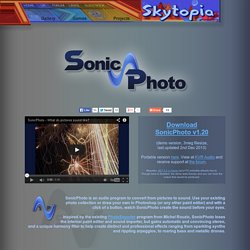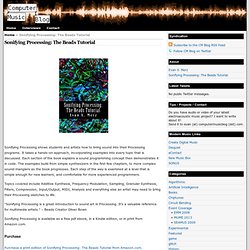

Drum Kit. Praat: doing Phonetics by Computer. Shore ...or how Sandy came to town... Create Digital Music. Critique my Oscillator (C++) Kuniklo wrote: mystran wrote:IMHO BLEPs are easier to implement (or even retrofit to a naive oscillator).

I couldn't find a good existing BLEP implementation so I began reading the papers and right around the time they started talking about doing cepstrum calculations in Matlab my eyes glazed over and I went back and copied and pasted Paul Kellet's BLIT oscillator into my code and had it working in a few minutes. The original paper was (incorrectly) written with the idea that if you convert your BLEP into minimum phase, you don't need to compensate for the delay. Unfortunately this is not the case as the minimum phase conversion (which is what the cepstrum crap was for IIRC) just makes the delay minimal and frequency dependent and practically impossible to compensate properly for (which leads to DC offset problems again).
If you forget about the minimum phase and just use linear phase BLEPs and delay compensate half the kernel size, it's actually pretty simple. If a Computer Were a Chanting Monk: Crazy Live Sounds from Kyma + Gametrak. If a computer could throat-sing, meditating on numbers, it might sound something like this.

Electro-acoustic composer Jeffrey Stolet is Professor of Music and Director of the Intermedia Music Technology at the University of Oregon, but “sonic shamanism” might apply as well. Mysterious sounds emerge from his laptop as he tugs and pulls on a controller, as if extracting sounds from within. (The hardware in question is a Gametrak game controller – a toy game device that has become an affordable 3D music input. Apparently some 300,000 units were sold by 2006, but the controller never caught on as a mainstream input device.) “Lariat Rituals” is a kind of esoteric improvisation on this controller; the computer utters formants and drones as Stolet shapes and conducts the sounds. The resulting instrumental environment is what Stolet describes as a “data-driven instrument,” though it seems it would fit in a category with other physical controllers in general. Thanks to Roland Lindner for the tip. Generative Music with Microtonic, Synplant and Improvisor.
MetaSynth 5. Version 5.4 has just been released and is fully Mavericks compatible.

If you own MetaSynth, retrieve the download info here. MetaSynth is an award-winning electronic music and sound design studio for OS X. Its six "rooms" provide six unique environments for creating and manipulating sound. There is much more to MetaSynth than creating sound from pictures. See and hear it in action on our videos page. MetaSynth is an electronic music studio for Mac OS X where you create, compose, design and transform music and sound in a unique environment that invites exploration. You can compose and mix full-length compositions in MetaSynth or use it to create or process elements that you use inside the DAW of your choice.
MetaSynth is not a soft-synth or plug-in. Words don't do MetaSynth justice. VIDEO TUTORIALS AND DEMONSTRATIONS: See MetaSynth in action and learn some great tricks as well. Below are links of interest to anyone that wants to get more out of MetaSynth. MetaEssentials Galbanum.com. Cellular Automata for Generative Music using Audiocubes. The Listening Machine.
SonicPhoto - Convert pictures to sounds! Using SonicPhoto is simplicity itself.

You can often achieve effective results by merely clicking "Load picture... " at the top left, and then click the green button "Create or Play sound". Following that, you might change one of the numerous slider options or finish off by saving the sound. For first time users, make sure you check out the inbuilt preset examples ("Choose a preset! " at top left) to see what you can achieve! Photosounder.com - Image-sound editor & synthesizer. Tibersynth v0.1. WavePad. Tonematrix. Visual Sound Application by Horizons. Sounds To Sleep To. Squareeater - binaural beats and brainwave entrainment for the psychedelic mind.
aM laboratory. Visual Acoustics. Glitchscape. Sonifying Processing: The Beads Tutorial. Home » Sonifying Processing: The Beads Tutorial Sonifying Processing shows students and artists how to bring sound into their Processing programs.

It takes a hands-on approach, incorporating examples into every topic that is discussed. Each section of the book explains a sound programming concept then demonstrates it in code. The examples build from simple synthesizers in the first few chapters, to more complex sound-manglers as the book progresses. Each step of the way is examined at a level that is simple enough for new learners, and comfortable for more experienced programmers. Topics covered include Additive Synthesis, Frequency Modulation, Sampling, Granular Synthesis, Filters, Compression, Input/Output, MIDI, Analysis and everything else an artist may need to bring their Processing sketches to life. “Sonifying Processing is a great introduction to sound art in Processing.
Sonifying Processing is available as a free pdf ebook, in a Kindle edition, or in print from Amazon.com. Music Generators.